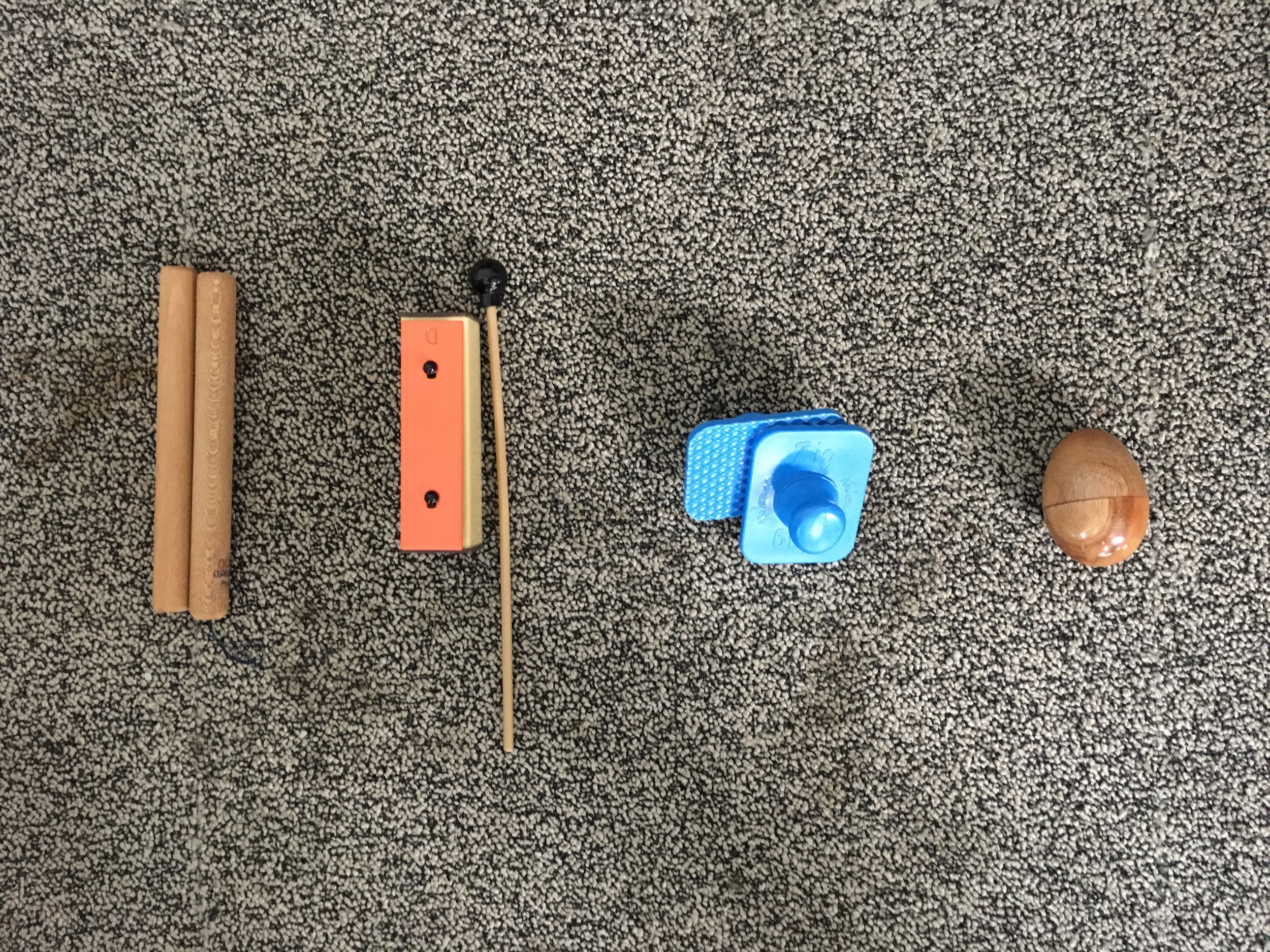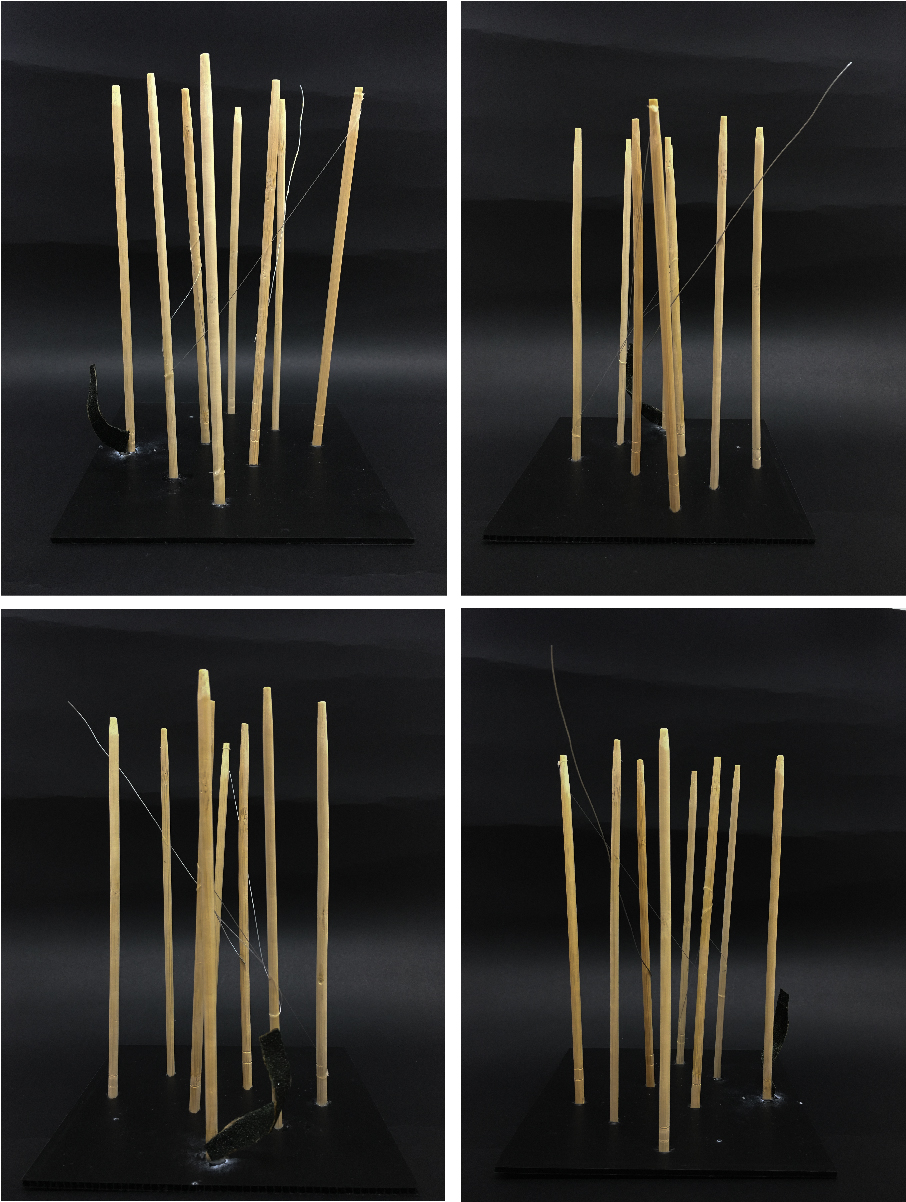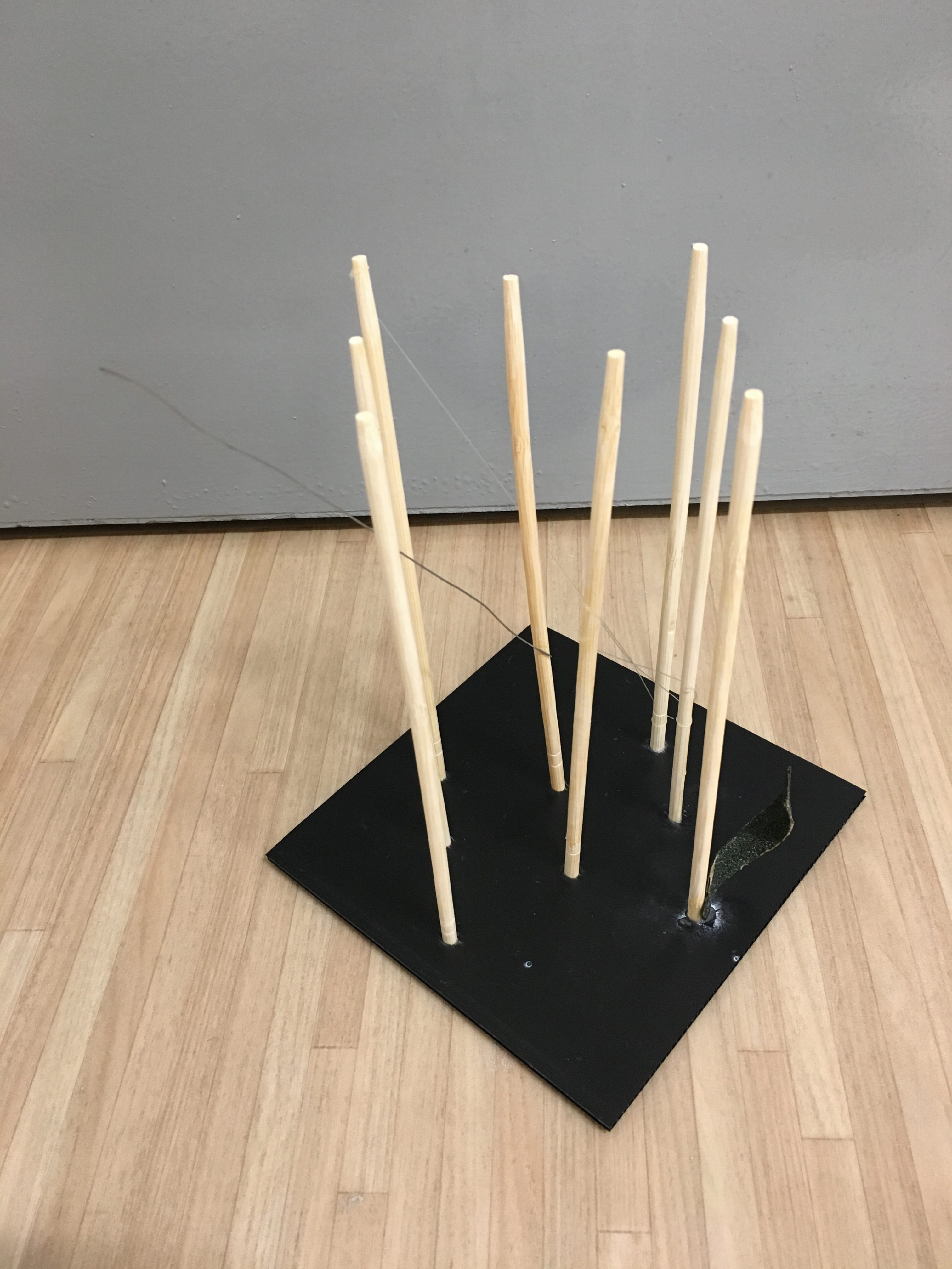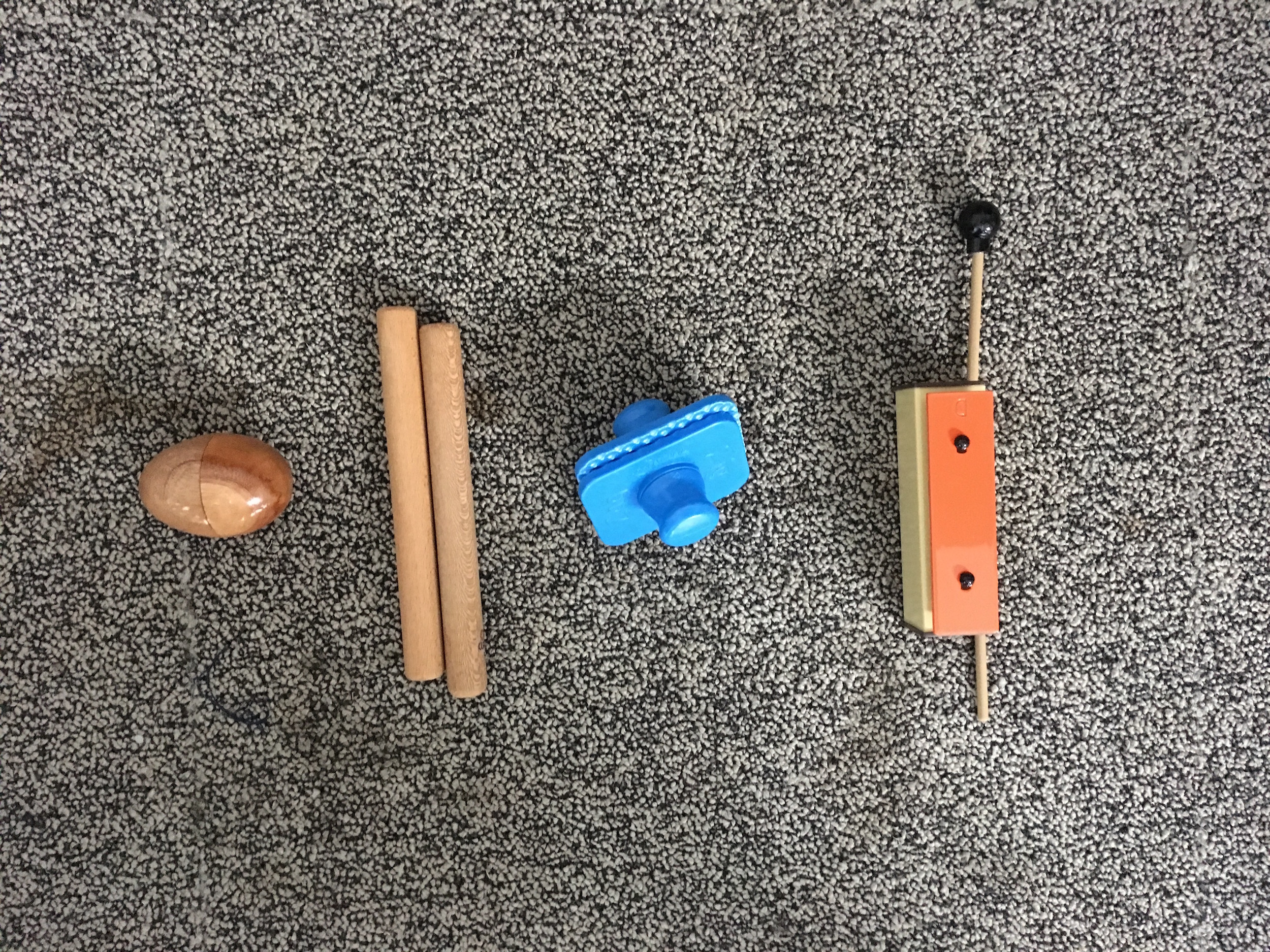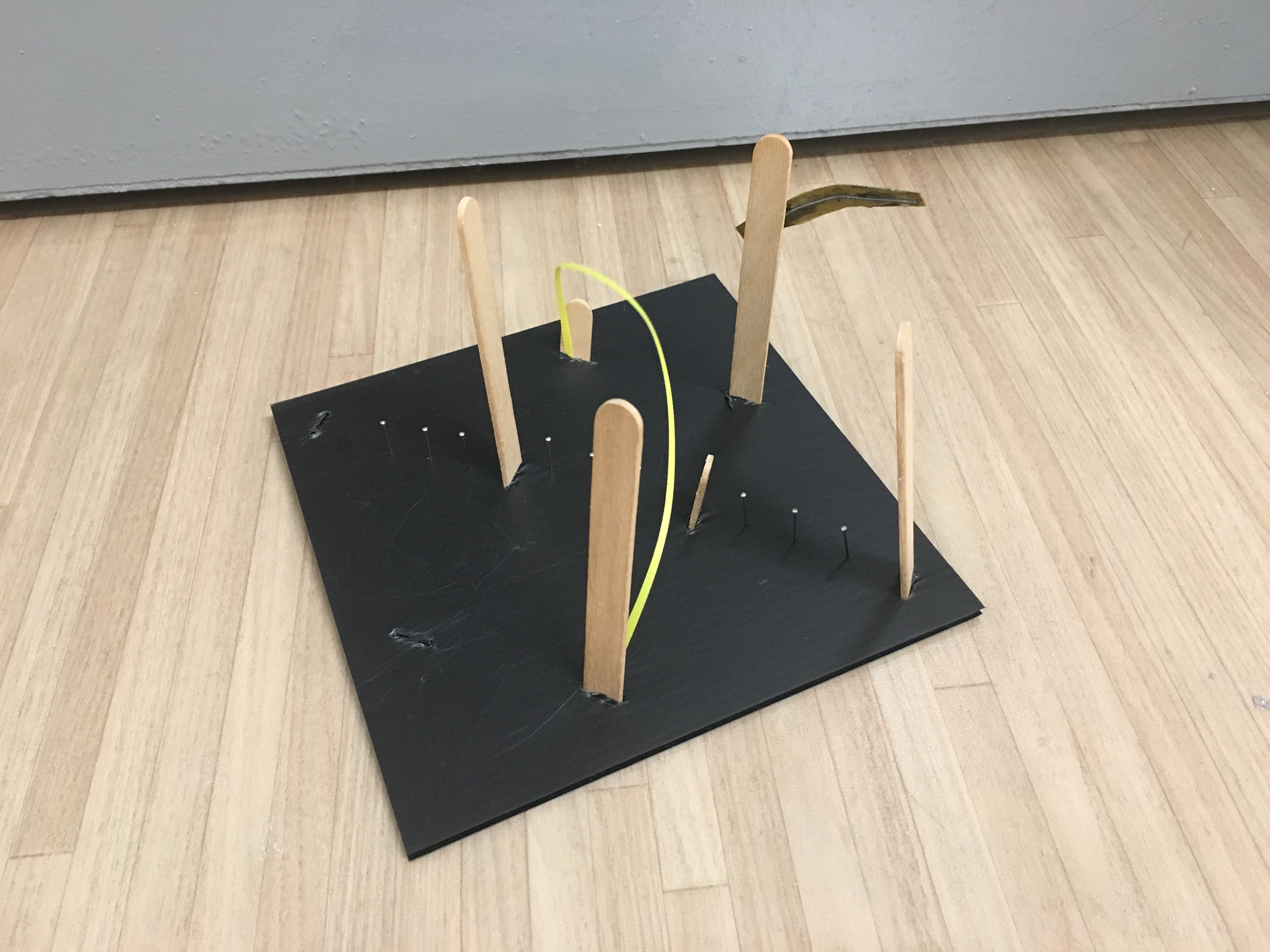For this assignment, we are tasked to make 2 sound compositions and translate them into sketch models, base on the sounds’ quality and characteristics. I personally am very intrigue by what we are doing since we are translating invisible and intangible sounds to tangible models. This is the first time that I’m doing something like this so I’m excited!
On a side note, this project reminds me of a condition called synesthesia. It is a condition in which one sense (for example, hearing) is simultaneously perceived as if by one or more additional senses such as sight. For example, people with synesthesia may see sounds or taste words. That’s cool!
Part A
Our music composition:
Instruments used:
- D: Rhythm sticks
- SD: Xylophone
- SO: Zigzag block
- SO: Egg shaker
Sound waves in Audacity:
Ideation:
Final Model:
Eight tall chopsticks are used to represent the regular beats made by the rhythm sticks in one cycle. I chose to use tall chopsticks because the beats made by the rhythm sticks are loud and dominant. The wire represents the resonating sound made by the xylophone, hence it points upwards into the sky, cutting through the air. Sandpaper is chosen to represent the short sound made by the zigzag block because of its course texture. Lastly, the subtle fishing line represents the scattered sound made by the egg shaker. I remember Cheryl saying that the SO should be the mischievous one, hence I tangle the fishing line through the chopsticks to showcase this sense of mischief.
Part B
Our music composition:
Instruments used:
- D: Egg shaker
- SD: Rhythm sticks
- SO: Zigzag block
- SO: Xylophone
Sound waves in Audacity:
Ideation:
Final Model:
As the scattered sound produced by the egg shaker is gentle, I chose ice cream stick to represent it since ice cream sticks are rounded and flat, giving off a harmless vibe. I alternate the lengths of the ice cream sticks to accurately portray the difference in loudness of the egg shaker sounds. Short pins are used to represent the beats made by the rhythm sticks, which are rapid and short. Like Part A, sandpaper is used to represent the zigzag block due to its course texture. The ribbon, which represents the long sonorous sound made by the xylophone, arches across the model. The arch also creates a void underneath, which represents the silence in our music composition.

